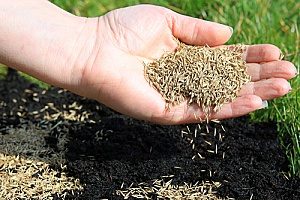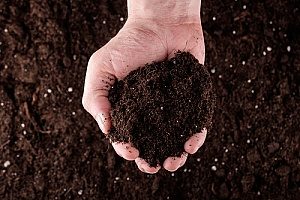 Now that the summer heat is just a memory, you can take steps to keep your lawn healthy and ready to bloom next spring. If you are a long-time property owner, you know from experience that tending to these small chores each fall pays off big in the longer run. With the help of Virginia fill dirt, your property will mature into a healthy landscape that stands out each spring.
Now that the summer heat is just a memory, you can take steps to keep your lawn healthy and ready to bloom next spring. If you are a long-time property owner, you know from experience that tending to these small chores each fall pays off big in the longer run. With the help of Virginia fill dirt, your property will mature into a healthy landscape that stands out each spring.
Here are ten of the most important lawn care tasks that you will want to tend to before the freezing weather sets in:
1. Mow The Grass At a Lower Height
Mowing the grass is important to help protect it against snow mold. Cutting it to a height of one or two inches shorter than you have in the summer will help it concentrate its energy in the roots for the winter.
2. Remove Leaves
Leaving the fallen leaves is one of the most important things you can do for your lawn in the fall. Removing them prevents the leaves from smothering the grass and turning your lawn into a slimy mess come spring. A mulching lawn mower helps make the task easier.
3. Aerate
If you have kids and dogs or a lot of foot traffic in your lawn, you may have areas where the ground has been packed hard and bare, the grass trampled, and the roots smothered. If so, your lawn will benefit from aeration. To aerate, you need a device that rolls across the ground and punches small holes in it. Aeration will allow air to circulate, and water and fertilizer can reach the roots.
4. Fertilize
If you have a mulching lawnmower, your lawnmower shreds your grass clippings and leaves so they provide organic material for the lawn throughout the season. A mulching mower helps keep the lawn healthy throughout the summer. Fertilizing with a fall fertilizer will help it stay in tip top shape.
For great results, use a weed and feed fertilizer product in early fall to eliminate weeds that have taken hold in the summer. In late fall/early winter, give the lawn another feeding with a fertilizer that will nourish the lawn through the winter. You will have the greenest, healthiest lawn in the neighborhood when spring arrives.
5. Overseed With Winter Grasses
 To overseed, buy a bag of cool weather grass seed. Once the temperature cools down below 75 degrees, use a spreader to cast it out over the existing lawn. Water it in a little, and let the rain do the rest.
To overseed, buy a bag of cool weather grass seed. Once the temperature cools down below 75 degrees, use a spreader to cast it out over the existing lawn. Water it in a little, and let the rain do the rest.
In the Virginia area, perennial ryegrass is the most common winter grass used for this purpose. It has a fine texture, grows quickly, and blends in well with warm-season grasses like Bermuda. If you want to keep rye grass healthy, give it shade in the summer and overseed it in fall.
Note that you should overseed in September or October so the sprouts have time to grow enough to withstand frost and freezing temperatures.
On bare patches, you should probably aerate them before you overseed for best results. Top it off with topsoil, and a layer of straw to help keep it all in place. Keep traffic off of it until the grass is established.
6. Winterize Your Irrigation System and Any Water Features
Turn off the water flow to your sprinklers and water features. Let them drain well. In extreme winter climates, you may need to use an air compressor to blow all of the water out of the pipes.
7. Fill Low Spots and Install Landscaping
Fall is a good time to take care of any problem areas in your yard. You may have a low spot that holds water or floods in the spring. Or you have an area that is too shady for grass. These are common problems that can be remediated before the freezing weather sets in.
Contact a Virginia fill dirt contractor to help you determine the right kind of fill for your project and estimate the amount you need. If you want to install plant material in the area, you will need several inches of good topsoil to support the plants. Once the fill and topsoil have been spread, you can landscape it with shrubs and perennial ground covers. Fall is the best time to plant trees, shrubs, mondo grass, liriope, and low-growing evergreens to fill in the area.
8. Install New Sod
Fall is a fantastic time to lay new sod. If you just need to repair bare patches, now is the time to do it. If you have new construction or need to lay sod over a large area, contact a dirt contractor to find out if you need to bring in Virginia fill dirt. The dirt contractor will evaluate the site and give you information about the type of dirt you may need for fill, followed by topsoil necessary to support the new sod.
9. Apply a Top Dressing
 After you have removed leaves, aerated, dethatched if necessary, and overseeded, your lawn will benefit from a top dressing. Top dressing is applying a thin layer of soil or compost to your lawn. Top dressing will help reduce thatch, increase the organic matter in the soil, smooth bumps in the lawn, and ultimately lessen the need for fertilizer.
After you have removed leaves, aerated, dethatched if necessary, and overseeded, your lawn will benefit from a top dressing. Top dressing is applying a thin layer of soil or compost to your lawn. Top dressing will help reduce thatch, increase the organic matter in the soil, smooth bumps in the lawn, and ultimately lessen the need for fertilizer.
Contact a dirt contractor to arrange a delivery of the correct amount of top dressing for your property. If you are top dressing a small area, simply spread a thin layer of equal parts loam, sand, and peat, and rake it in.
10. Plant Bulbs
Fall is the best time for planning most spring blooming bulbs. The best ones include tulips, daffodils, and hyacinths. Popular tubers to plant in fall are daylilies and dahlias. Once planted, cover them with compost or mulch several inches thick to protect them during the winter.
Contact a Virginia Fill Dirt Contractor For More Information
Before you start your fall lawn care project, speak to a Virginia fill dirt contractor. A Virginia fill dirt contractor can make the job easier for you by evaluating your site, estimating the amount and type of dirt you need, and delivering it right to your door. Call soon to get your project completed before the winter sets in.








































